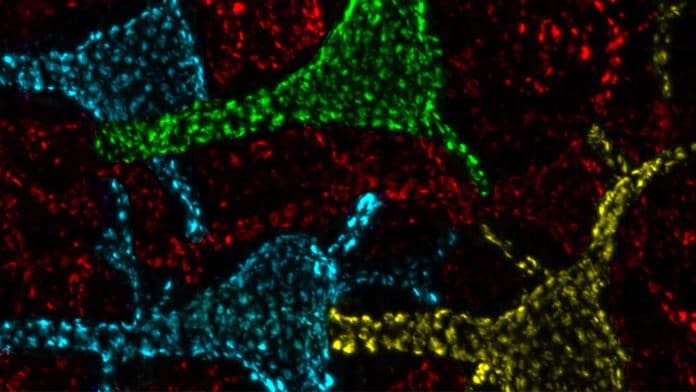For three decades, a mysterious cluster of proteins found on the cell body of neurons in the hippocampus has puzzled scientists. Highly conserved features are relatively unchanged through evolutionary timescales, suggesting they have an essential functional property in these very different types of animals.
A new study has finally revealed what these clusters are. The UC Davis School of Medicine study has shown that these mysterious clusters of proteins are calcium-signaling “hotspots” that activate gene transcription.
Transcription allows portions of the neuron’s DNA to be “transcribed” into strands of RNA that are then used to create the proteins needed by the cell.
Scientists knew that these clusters are formed by a protein that passes potassium ions through membranes. What’s more, these clusters have a particular type of calcium channel that allows calcium to penetrate cells. Inside the cells, the calcium triggers various physiological responses based on cell type.
Disturbance to these clusters can cause severe neurological disorders. But the reason behind it remains unclear.
To determine the function of the neuronal clusters, scientists came up with a new approach that allowed them to uncouple the calcium channel from the potassium channel clusters in neurons.
Nicholas C. Vierra, a lead author for the study, said, “A key finding was that this treatment blocked calcium-triggered gene expression. This suggests that the calcium channel-potassium channel partnership at these clusters is important for neuronal function.”
Scientists tricked the calcium channels at these clusters for their experiment by flooding the neurons with decoy potassium channel fragments. They fell away from the clusters when the calcium channels grabbed onto the decoys instead of the real potassium channels. As a result, the process known as excitation-transcription coupling, which links changes in neuronal electrical activity to changes in gene expression, was inactivated.
Trimmer said, “There are a lot of different calcium channels, but the particular type of calcium channel found at these clusters is necessary for converting changes in electrical activity to changes in gene expression. We found that if you interfere with the calcium-signaling proteins located at these unusual clusters, you eliminate excitation-transcription coupling, which is critical for learning, memory, and other forms of neuronal plasticity.”
The study is expected to open up new avenues of research.
Vierra said, “A lot of research has focused on calcium signaling in dendrites – the sites where neurons receive signals from other neurons. Calcium signaling in the cell body of neurons has received less attention. Now we understand much more about the significance of signaling at these specific sites on the cell body of the neuron.”
Trimmer said, “We are only at the beginning of understanding the significance of this signaling, but these new results may provide information that could shape new research into its role in brain function, and perhaps eventually into the development of new classes of therapeutics.”
Journal Reference:
- Nicholas C. Vierra, Samantha C. O’Dwye et al. Regulation of neuronal excitation–transcription coupling by Kv2.1-induced clustering of somatic L-type Ca2+ channels at ER-PM junctions. DOI: 10.1073/pnas.2110094118
